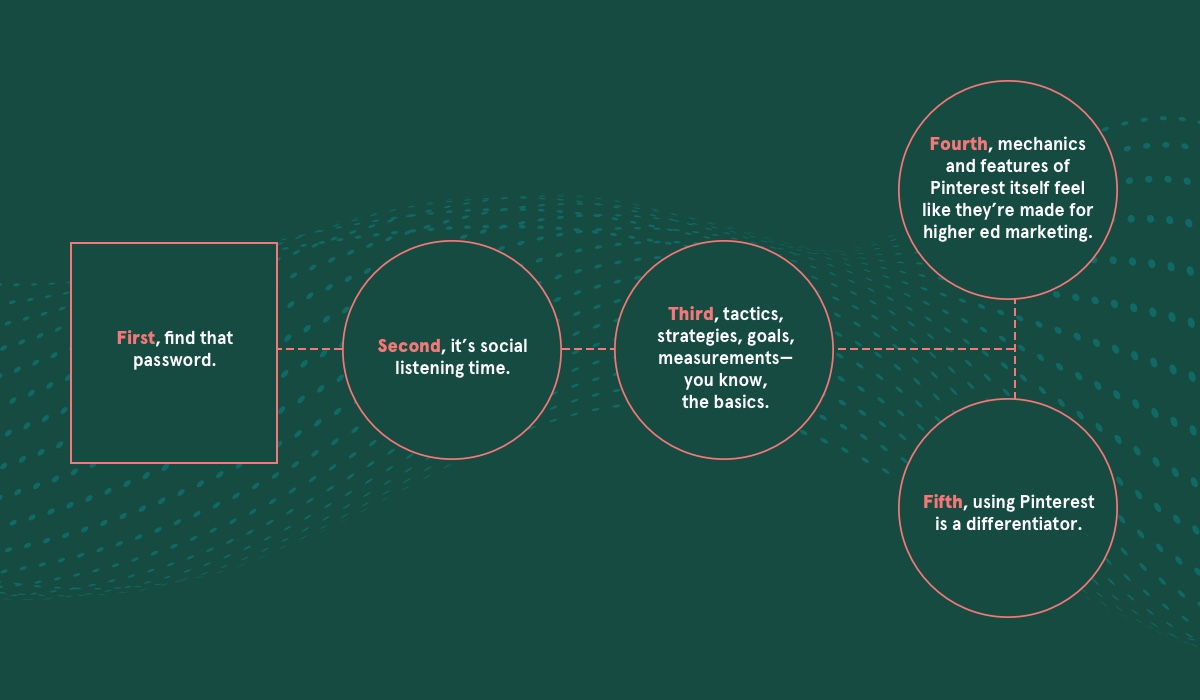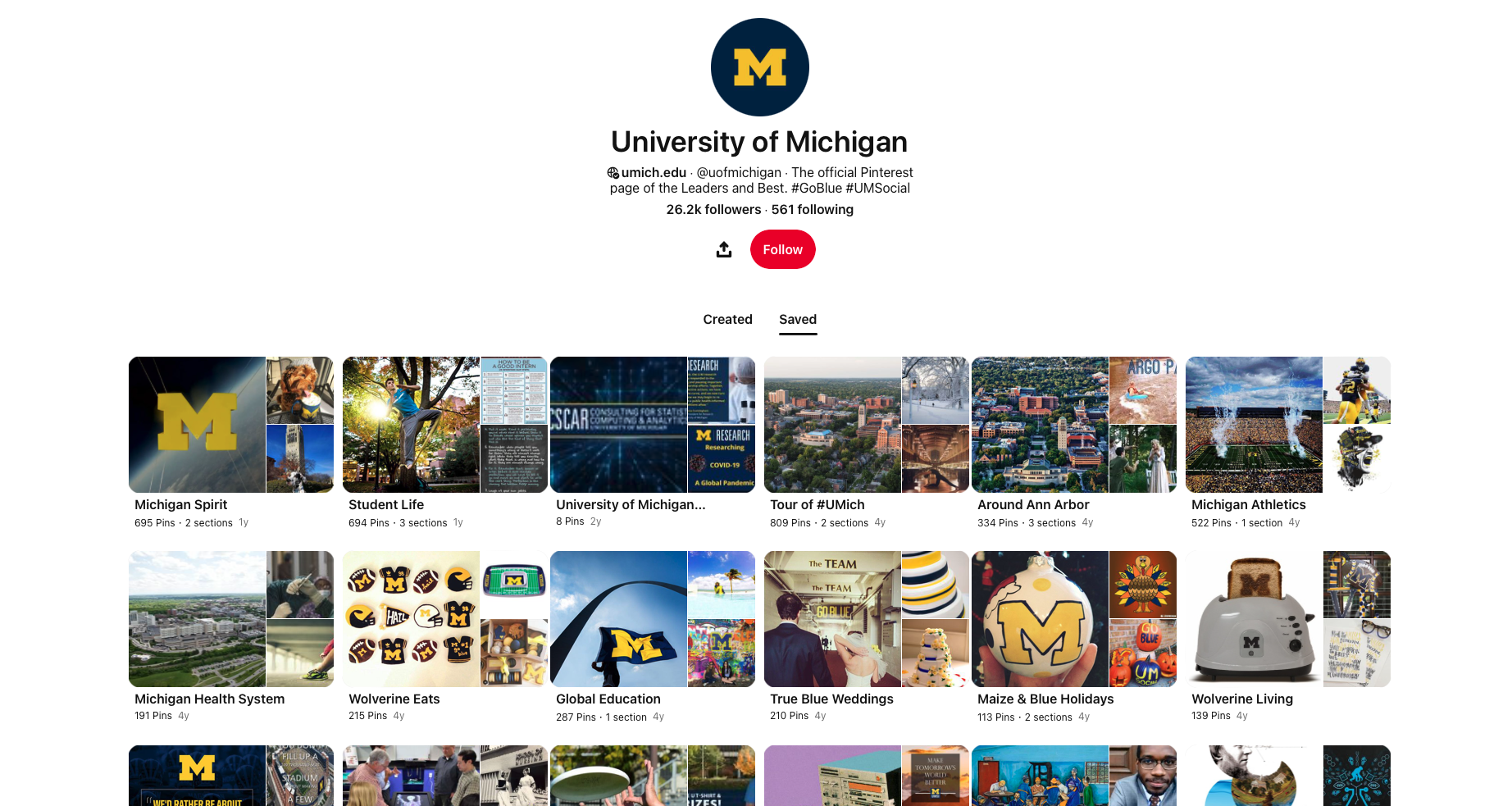Pinterest is made for higher ed marketing.
The fourth and final thought: the mechanics and features of Pinterest itself feel like they’re made for higher ed marketing. Because they are! Pinterest has always put marketing, personalized, machine-learning-driven marketing first.
A couple of highlights about the platform. The Sections feature allows the creation of a kind of umbrella board, with sections underneath it. This is a great chance to showcase all the parts of a campus or a learning experience. An academic example first: there’s an engineering department, and inside that department are mechanical engineering, civil engineering and computer engineering—any variety of engineering styles. The department has an overarching board, with Sections for each of the individual focus areas.
Same for theater, physics and athletics, the opportunities are endless.
Along these same lines, Pinterest wants links and strong calls to action. What users find on Pinterest is supposed to lead them somewhere else: to a news site, to a departmental web page, to an events calendar or to the admissions page. Users go to Pinterest to discover other places.
There’s more to talk about, but it’s best to explore Pinterest and find what could work for a specific school in specific ways. The beauty of Pinterest is that it can support almost any idea.






